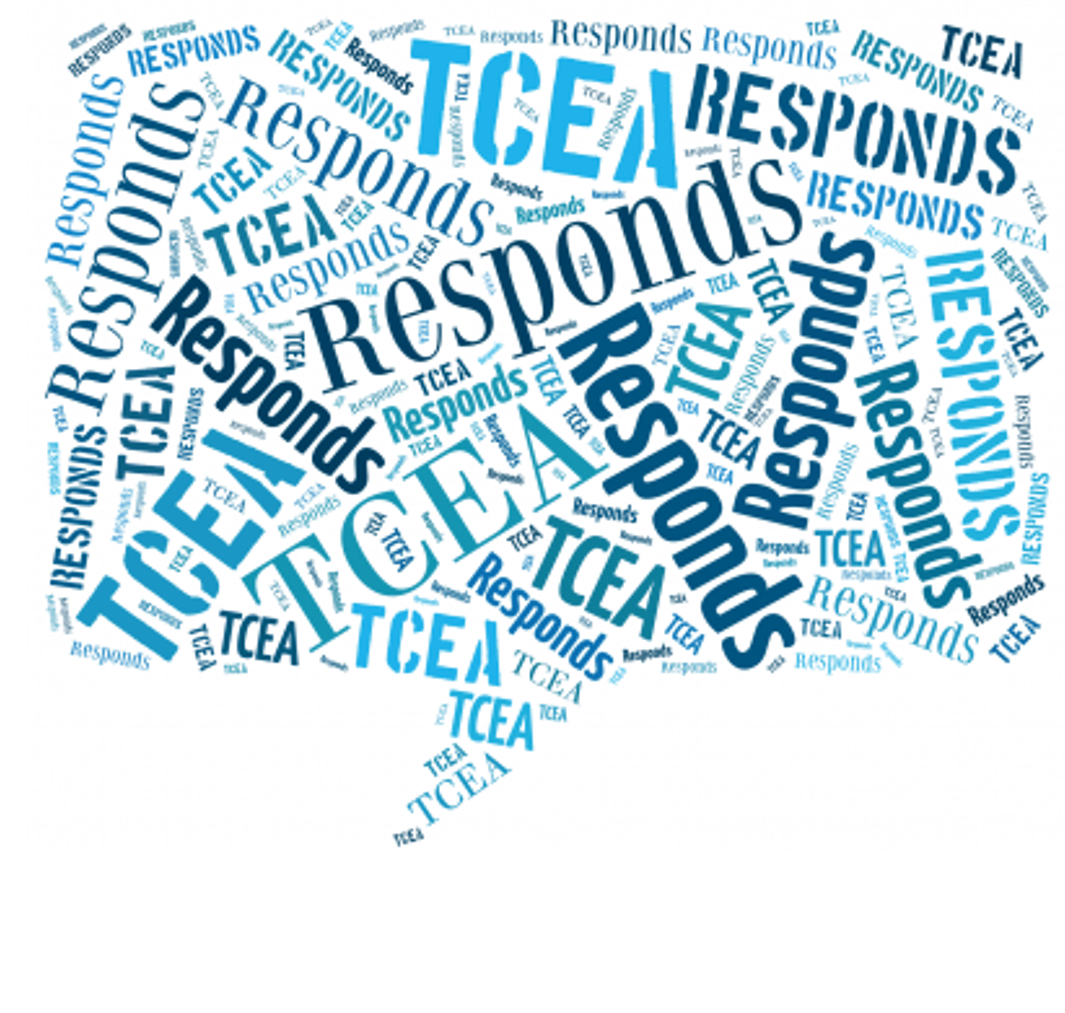Dear TCEA Responds:
I am a new CTO/Tech Director and love this article at TCEA’s Technotes blog (First Things First). I need to better understand how my staff works. A part of that involves tracking their work to better understand the organization as you recommend. We have the break fix tracking software. I’m thinking more of something project oriented and time tracking. My concern is my coaches are spending too much time on fixing broken equipment and not enough on curriculum support. My network and hardware specialists may be spending too much time waiting for things to go down, if that makes sense. Do you have any software recommendations for doing that?
Thanks, Mike
Dear Mike:
Thanks for the wonderful feedback about the First Things First blog entry. Now, on to your question, What’s the best way to track your staff’s work? Several approaches can work. Before we jump into those, it’s worth asking the question, “What will you do with the data you gather about your staff’s work tasks?” You need to ask that question. You can’t tell your end users (e.g. teachers, principals, central office staff) that your team needs to focus only on completing work orders. That would send the wrong message about your department’s customer service. You can provide valuable data and information to your stakeholders. Valuable information about their own practices can help them make connections about their own needs. It will also make it easier for your to provide informed customer service.
Providing the Best Customer Service
As a new CTO, put the following strategies in place. The strategies may better address the needs of those you serve. These strategies are multi-faceted and can help you overcome the challenges of a beginning CTO.
Strategy #1 – Implement a Single Point of Contact
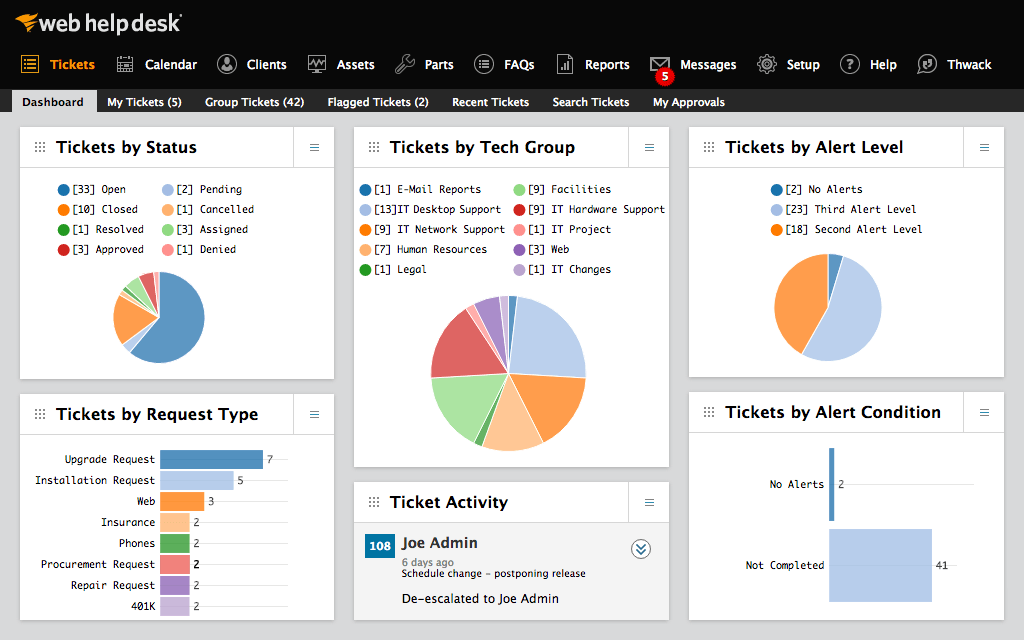 Establishing a single point of contact, such as an online system, eliminates the confusion that results from incoming phone calls or in-the-hallway interruptions. The main benefit is that it ensures prompt access for the end user, anytime and anywhere. This solution should meet the following criteria:
Establishing a single point of contact, such as an online system, eliminates the confusion that results from incoming phone calls or in-the-hallway interruptions. The main benefit is that it ensures prompt access for the end user, anytime and anywhere. This solution should meet the following criteria:
- Work on a variety of devices, including iOS/Android devices
- Allow for the end user to check the status of their problem
- Email-to-ticket conversion
- Active Directory and LDAP authentication
- Auto ticket routing
- Parent/child ticket mapping
- Balancing/re-assigning tickets
- Graphs and reporting
- Ability to rank the importance of incoming calls
- Make it easy to set up types or categories of work orders that are understandable to end users
A few possible solutions widely used in Texas school districts include:
Of course, you can also take advantage of free solutions, such as Google Forms and/or Microsoft Forms.
Strategy #2 – Differentiate Between Jobs
If your instructional technologists, a.k.a. digital coaches, are performing technical support, why are technicians needed? Or if technicians are serving as digital coaches impacting instruction, the district is wasting critical funding. While it’s nice to have a jack-of-all trades staff member, you need to remember that the more specialized your team members are, the better it is for your district. Instructional technologists and technicians should train together, learn new technologies, and be able to solve problems. When you do this, you are growing future CTOs. But if a significant amount of time is spent with crossover duties, then you are under or over paying someone.
Here is one example document aligned to Texas objectives:
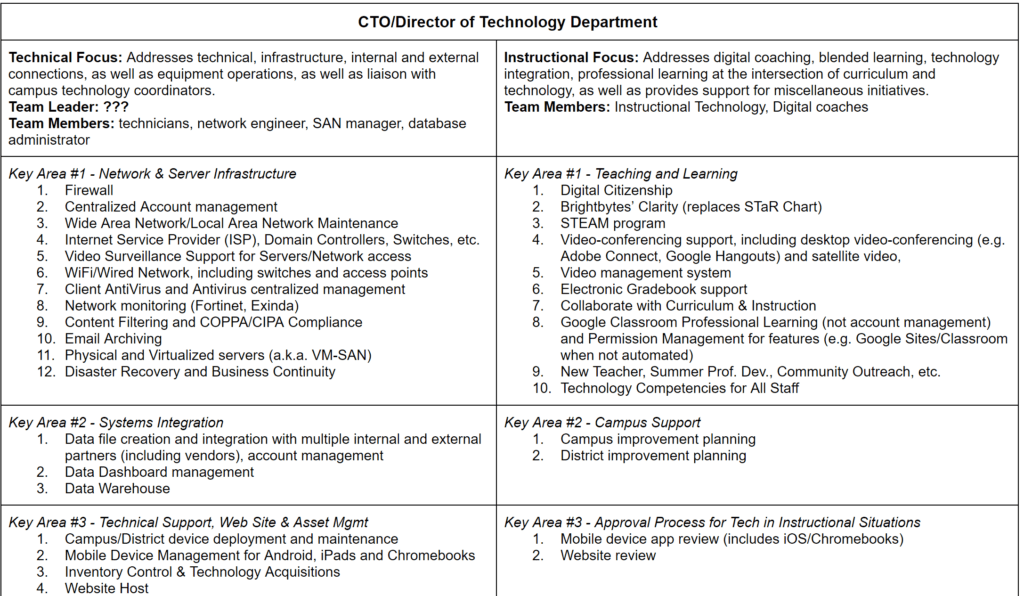
Below is another example from Beaverton Public Schools (Oregon-based):
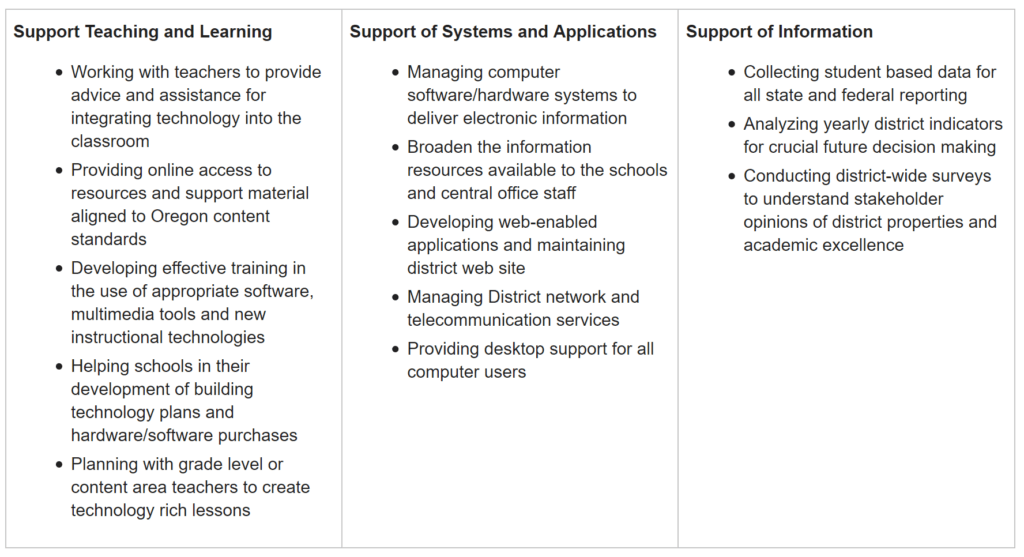
These charts establish a clear separation of the work to be done and better define the job roles. Communicate this information to all stakeholders. Sharing this information on social media, at superintendent’s cabinet and principals’ meetings, can speed this process.
Strategy #3 – Clarify Expectations for Response Times
Defining job roles is insufficient. In addition, you need to set up a service level agreement (SLA). This agreement lets everyone know what is critical and what is not. Without an SLA in place, you will have technicians running from one campus to district office, then back again. Is a computer lab top priority at the high school or is the superintendent’s locked iPad top priority?
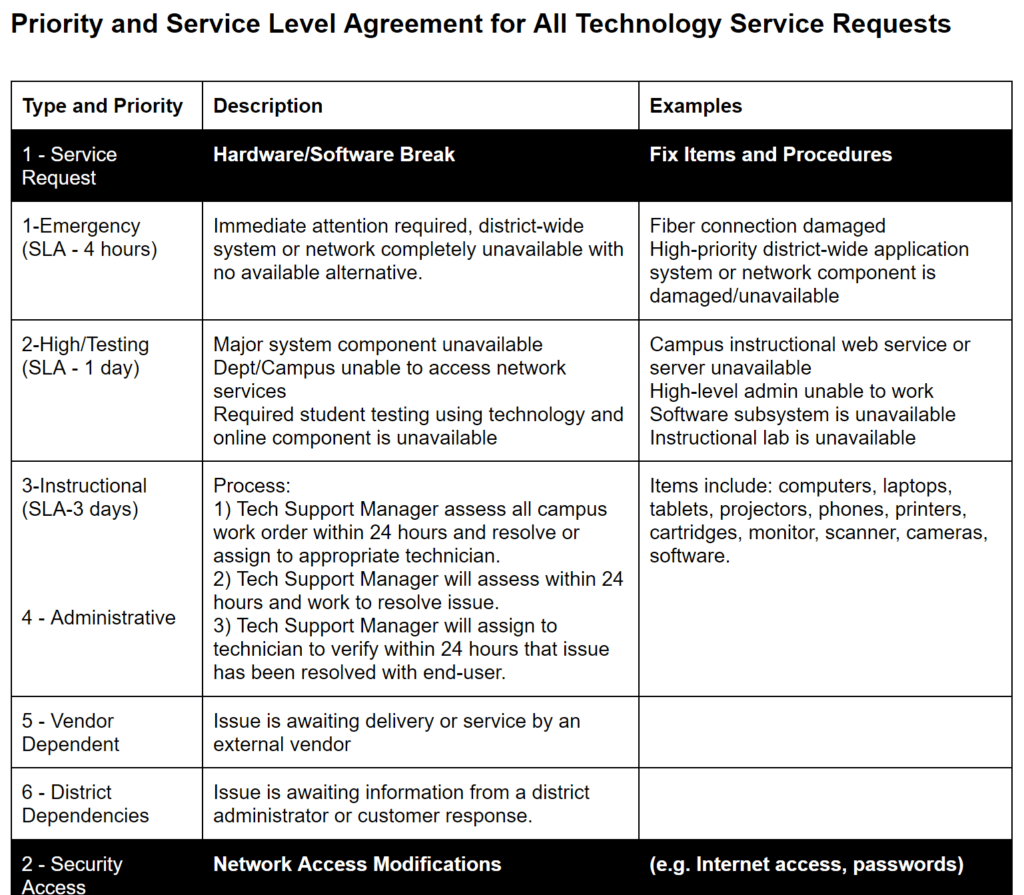
Get a copy (requires Google login)
Final Thoughts
As you plan, remember the cardinal principle of your work: relationships matter. Move forward with care, building and deepening relationships as you go. Cut loose those on your team who refuse to embrace better customer service for those you serve. Be transparent about what you do, and revisit those SLAs. Be fearless in holding yourself accountable and make it safe for your team to hold themselves accountable.

